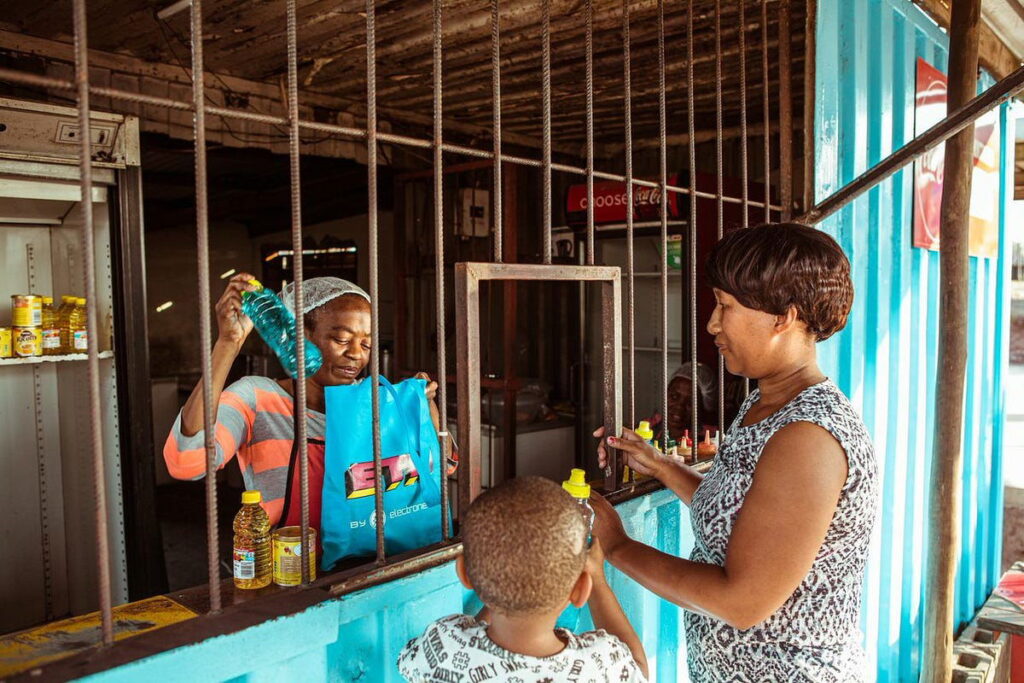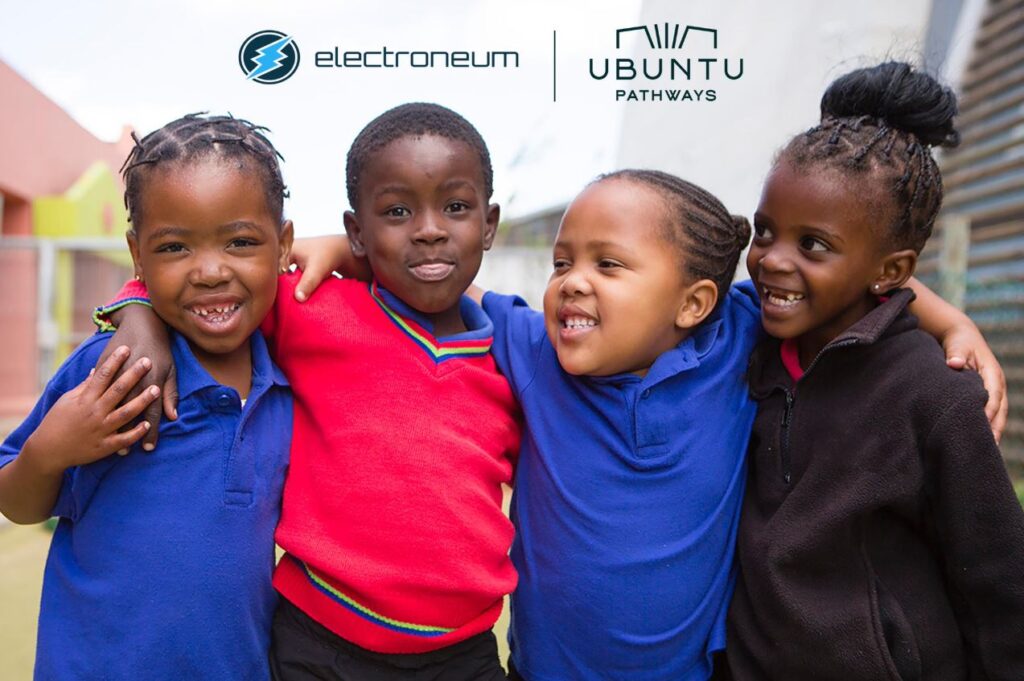
Crypto and blockchain greater purpose than just hype and speculation. Financial inclusion is its greatest social impact potential and it’s happening across Africa already | Credits: @ETN
Cryptocurrency is often seen as a volatile speculative tool, a digital gold rush for the tech-savvy and those driven by investor greed. However, beneath the market hype lies a quieter, more profound purpose: crypto as a force for social impact and humanitarian good.
From feeding the hungry to helping girls and women, as well as their families, with education and financial inclusion, to empowering the marginalised, blockchain technology is rewriting the rules of philanthropy, delivering aid with unprecedented transparency and efficiency.
Projects like Apex Fusion and Electroneum, among others, have demonstrated that crypto’s potential extends far beyond profit, offering lifelines to the world’s most vulnerable while leveraging digital identities to streamline aid in crisis zones, such as refugee centres.
The most recent reports (2021) reveal there are 1.4 billion unbanked people globally. Over 1.1 billion live in acute multidimensional poverty. Nearly 123 million are displaced worldwide.
Philanthropy is enormous, but unfortunately, it is also blind, as official statistics indicate that up to $1.5 trillion is donated annually worldwide. Yet, only 80% of that reaches those in need of vital altruism. Trust in NGOs is low. Transparency is extremely scarce, but ideally, 80% of the money raised should reach the intended recipient.
Turning crypto profits into hope
Most notably, Ethereum co-founder Vitalik Buterin donated over $1.2 billion to India’s COVID relief in one go back in 2021. He, in effect, turned memecoin profits into hope for millions of recipients of his $13 billion in total donations to date.
“Anything sent to my wallet gets donated,” Buterin said in response to many memecoins sent to his wallet by creators. “Crypto can rewrite lives, not just markets,” he told CoinDesk in 2024, inspiring a wave of blockchain-based giving that proves even meme coins can fuel meaningful change.

Staking for a better world
Apex Fusion, a Web3 innovator, is redefining how cryptocurrency can drive change. Through its SPO Charity Program, built on the Prime Layer 1 blockchain, Apex Fusion channels staking rewards from its AP3X token, offering a 10% annual percentage yield, directly to verified charitable causes.
“We’re not here to just make money,” Christopher Greenwood, the program’s director, told HackerNoon. “Proof of Stake can change lives.”
In March 2025, the initiative funded Ammucare, providing 2,050 meals to India’s poorest communities. The following month, it supported the World Tribal Alliance, planting fruit-bearing trees in South Africa to combat hunger sustainably.
“Every cent, minus minimal costs, reaches charities,” Greenwood emphasised. “It’s transparent, tracked on-chain, regenerative giving.” By leveraging blockchain’s transparency, Apex Fusion ensures donors see exactly where their contributions go, building trust in a sector often plagued by scepticism.

Empowering the unbanked
Since its inception eight years ago, Electroneum, a mobile-first cryptocurrency with over 4 million users, has been breaking barriers for the unbanked through its AnyTask platform. By enabling tens of thousands of freelancers in underserved regions to earn ETN without requiring a bank account, AnyTask creates economic opportunities where traditional financial services fall short.
More recently, Electroneum has enhanced its blockchain via its Aurelius update, introducing smart contracts, EVM compatibility for dApps, and the Istanbul Byzantine Fault Tolerance consensus with reputable validators, ensuring high scalability, low costs and lightning-speed finality. It has enhanced its real-time key metrics transparency for greater trustworthiness, making it a glove-fit right for its ongoing charitable mission.
Partnerships with NGOs like UBUNTU Pathways, active as of 2023, have been transformative in South Africa, funding education and healthcare for 1,200 families while cutting aid delivery costs by 30%, according to a UBUNTU report.
Electroneum’s work extends to NGOs such as the Wonder Foundation and Moinho Brazil, supporting long-term youth programs and initiatives that aim to empower thousands of girls and women. “We’re still powering NGOs,” an Electroneum spokesperson confirmed on X, highlighting how AnyTask’s blockchain-based transactions ensure fast, low-cost aid delivery.
These efforts empower individuals to break free from poverty cycles, demonstrating crypto’s potential as a tool for systemic change as they accompany recipients from start to success.

Blockchain for NGOs: transparency and efficiency
Beyond Apex Fusion and Electroneum, other nonprofits are harnessing the power of blockchain. The United Nations’ World Food Programme (WFP) has pioneered the use of blockchain in humanitarian aid through its Building Blocks project, launched in Jordan’s Azraq and Zaatari refugee camps.
By integrating Ethereum-based private blockchains with iris-scanning technology (EyePay), WFP enables refugees to purchase essentials without bank accounts or paper vouchers. This system, operational since 2017, has reduced financial transaction costs by 98%, saving $150,000 per month in Jordan alone, according to WIRED.
The transparency of blockchain ensures every transaction is traceable, reducing fraud and building donor confidence. Similarly, UNICEF’s Cryptocurrency Fund, launched in 2019, accepts and disburses Bitcoin and Ether to support open-source technology for children, collaborating with startups like Atix Labs and StaTwig to enhance global aid delivery.
Digital Identities: A game-changer for refugees
One of blockchain’s most transformative applications is in digital identities, particularly for refugees. It is being widely experimented with by the UN Refugee Agency. Over 1 billion people worldwide lack formal identification, which hinders their access to essential services, including healthcare, education, and financial aid.
Blockchain-based digital IDs provide a secure and immutable solution. The WFP’s Building Blocks, for example, uses Ethereum to record refugee transactions, linking iris scans to digital wallets.
This enables displaced individuals to access aid without requiring physical documents, which are often lost during crises. The World Economic Forum notes that such platforms provide “a transparent infrastructure that governments and NGOs can adopt,” scalable from local initiatives to global solutions.
In Jordan, refugees utilise EyePay to purchase groceries, with transactions recorded on a private blockchain, ensuring transparency and efficiency. This approach not only empowers individuals but also reduces bureaucratic delays, making aid delivery faster and more equitable.

Other notable projects
Several other crypto initiatives are making waves in humanitarian aid. The Giving Block, a platform facilitating crypto donations, has onboarded nonprofits like Save the Children, which began accepting Bitcoin in 2013 and now supports multiple cryptocurrencies.
In 2023, The Giving Block reported that blockchain’s transparency helped nonprofits deliver aid faster during crises, such as natural disasters.
Mercy Corps, another leader, utilises stablecoins to offer loans to rural Kenyan farmers, facilitating financial inclusion without traditional banking infrastructure. These projects underscore blockchain’s ability to bypass intermediaries, ensuring aid reaches those in need with minimal overhead.
Challenges and the path forward
Despite its promise, crypto philanthropy faces challenges. Volatility, as seen in Buterin’s Shiba Inu donation, can destabilise funding if not managed carefully. Regulatory concerns also loom, with NGOs urged to engage regulators to prevent misuse, such as bypassing sanctions.
Yet, the benefits—transparency, efficiency, and accessibility—far outweigh the hurdles. As blockchain technology matures, its integration with smart contracts and digital IDs will further streamline aid delivery, particularly in refugee centres where speed and trust are critical.
A new era of giving
From Apex Fusion’s regenerative staking to Electroneum’s empowerment of the unbanked, and from Buterin’s transformative donations to WFP’s digital IDs, crypto is proving its heart beats for humanity. These initiatives aren’t chasing clout—they’re forging a world where blockchain lifts the forgotten, one transparent block at a time.
As more NGOs and innovators join this movement, cryptocurrency’s legacy will be defined not by market caps but by lives changed, proving that even in a volatile digital realm, hope is the ultimate currency.







